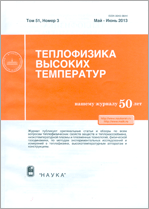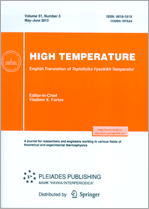|
This article is cited in 4 scientific papers (total in 4 papers)
Heat and Mass Transfer and Physical Gasdynamics
Heat and mass transfer as a means of flow mode management in a supersonic boundary layer
S. A. Gaponov, N. Terekhova
Khristianovich Institute of Theoretical and Applied Mechanics, Siberian Branch of the Russian Academy of Sciences, Novosibirsk
Abstract:
This paper continues the studies cycle of flow management simulation methods in boundary layers of compressible gas. The influence of distributed heat and mass transfer on the stability characteristics of supersonic boundary layers is considered at Mach numbers $\rm M = 2.0$ and $5.35$. At high Mach numbers, waves of vortex nature and unstable acoustic oscillations emerge. Resistance to both types of disturbances is studied. Both normal injection, with normal mean velocity, $V$, being the only nonzero component, and injection at other angles, including tangential with the longitudinal component of mean velocity, $U$, being the only nonzero component on the wall, are simulated. It is shown that a tangential streamwise injection causes significant flow stabilization in relation to vortex and acoustic modes. This mode management provides thermal protection of the streamlined surface under aerodynamic heating, and is able to expand the laminar flow mode region. Cooled gas injection suppresses vortex disturbances and amplifies acoustic waves, while injected heated gas influences boundary layer stability in the opposite way. The performed studies anticipate that an injection of homogeneous cold gas would be similar to an extraneous heavy gas injection, and that injected heated gas would behave similarly to injected light gas.
Received: 11.08.2015
Accepted: 22.12.2015
Citation:
S. A. Gaponov, N. Terekhova, “Heat and mass transfer as a means of flow mode management in a supersonic boundary layer”, TVT, 55:6 (2017), 733–741; High Temperature, 55:6 (2017), 898–905
Linking options:
https://www.mathnet.ru/eng/tvt8778 https://www.mathnet.ru/eng/tvt/v55/i6/p733
|


| Statistics & downloads: |
| Abstract page: | 259 | | Full-text PDF : | 84 | | References: | 29 | | First page: | 1 |
|





 Contact us:
Contact us: Terms of Use
Terms of Use
 Registration to the website
Registration to the website Logotypes
Logotypes








 Citation in format
Citation in format 
